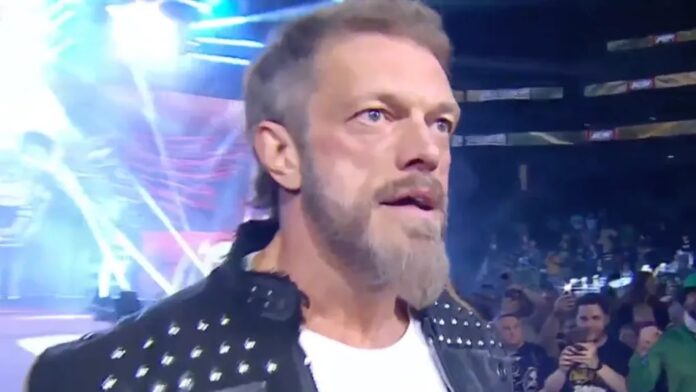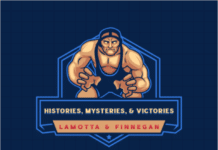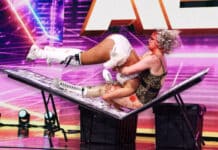
With the north east looking like a blood runs cold promo for Ray Lloyd in 1997, I’ve avoided the frigid temperatures of western Pennsylvania as much as possible, and when I caught up with the great Pat McLaughlin on the phone to discuss this week’s potpourri of pro wrestling, a few points were made that set up for this column. As I wrote earlier this week, despite being in the hometown of the AEW world heavyweight champion, Cincinnati, Dynamite drew an estimated 1,500 fans to the Andrew Brady Music Center. The venue itself can hold up to 4,500, but the set up was essentially tailored for what they sold, according to WrestleTix.
The hometown champion drew less than half a house at the less-than-legendary Andrew Brady Music Center. Again, no disrespect intended to Andrew Brady.
Yes, I agree that All Elite Wrestling can’t run large arenas with dismal ticket sales, but when you can see the back row in every camera shot, the visual sends a message too, especially when the brand was able to pack buildings at one time in its formative stages. As I said to Pat on the phone, the small buildings in professional wrestling were romanticized by ECW. The extreme commodity was built on grittiness, mostly because they had no other choice, they either made that visual presentation work, which suited the era of the edgy 90s perfectly, or the company would’ve folded long before it actually closed its doors in 2001. The visual presentation of fans jammed into the frame of the ECW television show enhanced the aura of the underground atmosphere that Paul Heyman tried to market to his audience.
Make no mistake about it, Sabu is one off the most innovative performers in the history of the business, and through his own series of unwise decisions, probably still doesn’t fully get the credit that he deserves for what he brought to the business in his heyday. Raven, particularly when he was in the right frame of mind, was a tremendous performer that could’ve also been much more of a star than he was, based on his own unwise track record. Taz was one of the most fearsome tough guys in the business, at least that was the perception. You could go down the list of money-drawing acts that ECW had on its roster at various points during it’s seven-year history. Shane Douglas, Tommy Dreamer, New Jack, Super Crazy, Steve Corino, and others were proven to sell tickets for the organization.
But, would ECW have ever fit into a stadium environment? Besides the fact that it was a niche product, albeit a niche product that changed the business forever, it simply didn’t have the main stream star power of WCW or WWF. Ironically, that was part of what made ECW as special as it was, it was very much a product of its time and place in the business. One of the many reasons that dozens of indy groups failed in their attempt to recreate it was because the climate of the industry was different after the national consolidation of 2001.
So, yes, smaller venues with a passionate fan base can be productive portions of a pro wrestling narrative, but the other side of the coin is that sometimes smaller venues are an indication of less of a demand for tickets and thus less revenue for the organization. The horse is out of the barn so to speak, All Elite already had several sell outs with thousands of tickets sold. Anything less than that must be considered a step backwards. Nobody praised WWF for running high school gyms for some early episodes of Raw when the business was in a total skid in 1995.
Aside from the fact that you can’t go backwards in terms of perception with smaller venues after bigger success previously without it looking like a step down, the bottom line is, the ECW analogy doesn’t jive with All Elite because Tony Khan isn’t trying to present a counter culture product, All Elite Wrestling is marketing itself as one of the major leagues in sports entertainment.
This week’s episode of Dynamite certainly didn’t look major league, and the aesthetic was something closer to the modern TNA product. It’s more or less unanimously agreed that TNA is a smaller pond so again, the optics send a message. Speaking of Total Nonstop Action, the newly-announced partnership with WWE doesn’t bode well for Tony Khan’s wrestling project. We’ve seen how the talent swap has been beatifically to both sides, specifically with the sense of optimism it created for the TNA brand. If the biggest sports entertainment company in the world is willing to work with these guys then there must be some quality talent on their roster. If nothing else, it gives fans that might’ve tuned out of TNA years ago when it fell off the map to air on Pop TV and Destination America a reason to sample the show again. Make no mistake about it, the bigger that TNA can become under its current brand, and that appears to be the goal with events announced for New York and Los Angeles this year, it takes at least some portion of the pie away from AEW.
But, what was the drawing card to this week’s edition of Dynamite, even if there were only 1,500 tickets sold for a product that airs live on national television every week?
As mentioned, hometown champion Jon Moxley headlined the card, defending his belt against Powerhouse Hobbs. EVP Kenny Omega’s first bout in the company in more than a year didn’t move the needle at the box office either. After Moxley beat Hobbs and his stable attacked for a post-match beat down, Adam Copeland made the save with FTR.
By all indications, the man known as only “Cope,” which isn’t exactly the most marketable moniker in professional wrestling history, looks to be the one that will square off with Moxley for the championship next. On the surface, it makes sense to book two stars against each other for the title, but similar to why the ECW ideology doesn’t apply for smaller buildings, it must be determined if the booking suits the time and a place for an organization. TNA in 2009 wasn’t the time or the place for Ric Flair even if he theoretically brought star power to the table.
Just because fans are aware of a performer, it doesn’t automatically translate to viewership or ticket sales, it clearly didn’t in the Cincinnati market.
When discussing this with Pat, a comparison was made about bringing in those older stars to a newer company, as it’s necessary if you want to expose the wrestling audience to your product, but as with anything else, how those assets are used is key. When WCW signed away Hulk Hogan and Randy Savage in 1994 and promoted them very successful for about five years each, it proved that older stars could still have a major value to jump start a brand. As we know, the mistake was made when nobody on the bloated roster was spotlighted ahead of any of those WWF acquisitions, with the exception of Bill Goldberg so ultimately the WCW engine ran out of steam, collapsing under the titanic of stupidity of Vince Russo.
Are aging WWE stars really what’s going to be what turns around All Elite Wrestling?
To put it in perspective, Cope is 51, and Moxley is 39 right now. Hulk was 41, and Macho was 42 when they were signed to WCW. And make no mistake about it, as successful as Cope and Moxley are, they aren’t on the same level in terms of star power as Hogan and Savage. That’s not a knock either, they are only a few in the history of the business that have that level of stardom.
So, the smaller arena atmosphere of ECW won’t work for All Elite because of the mission statement originally presented by Tony Khan, they have a more dedicated, but still smaller audience than TNA had when they brought in former WWE stars, and they haven’t been nearly as effective as WCW was with maximizing the star power of older talents. In some ways, Tony Khan has replicated at least a few of the mistakes that other promotions made in the past, and that’s not meant nearly as harsh as it might sound, the professional wrestling business is such a unique commodity that it’s just extremely difficult for any promoter to find continued success on a long-term basis, which is why WWE remains the kingpin of the industry.
Maybe this discussion is moot because as we know, money is no object to Tony Khan, profit isn’t the first priority so if his wrestling project gets typecast as secondary, much in the way that TNA did after the Hogan era flopped, it probably don’t make much of a difference in the status of All Elite Wrestling. Tony will continue to book “dream matches” and hope for winning booker of the year from The Wrestling Observer, with any quality content from the process as merely a coincidence. However, and this might be the biggest takeaway from the entire scenario, while the financial status of AEW is fine, if the company gets pigeonholed into a spot where it’s not considered a legitimate force in the industry, those dynamics could affect the overall direction of the business. If WWE is seen as the only top options for talent, eventually the opportunities for performers could become limited as there’s realistically only so many spots on the roster and a lack of legitimate options within sports entertainment could yield one-dimensional industry.
What do you think? Share your thoughts, opinions, feedback, and anything else that was raised on Twitter @PWMania and Facebook.com/PWMania.
Until next week
-Jim LaMotta
E mail [email protected] | You can follow me on Instagram, Facebook, & Threads @jimlamotta89






